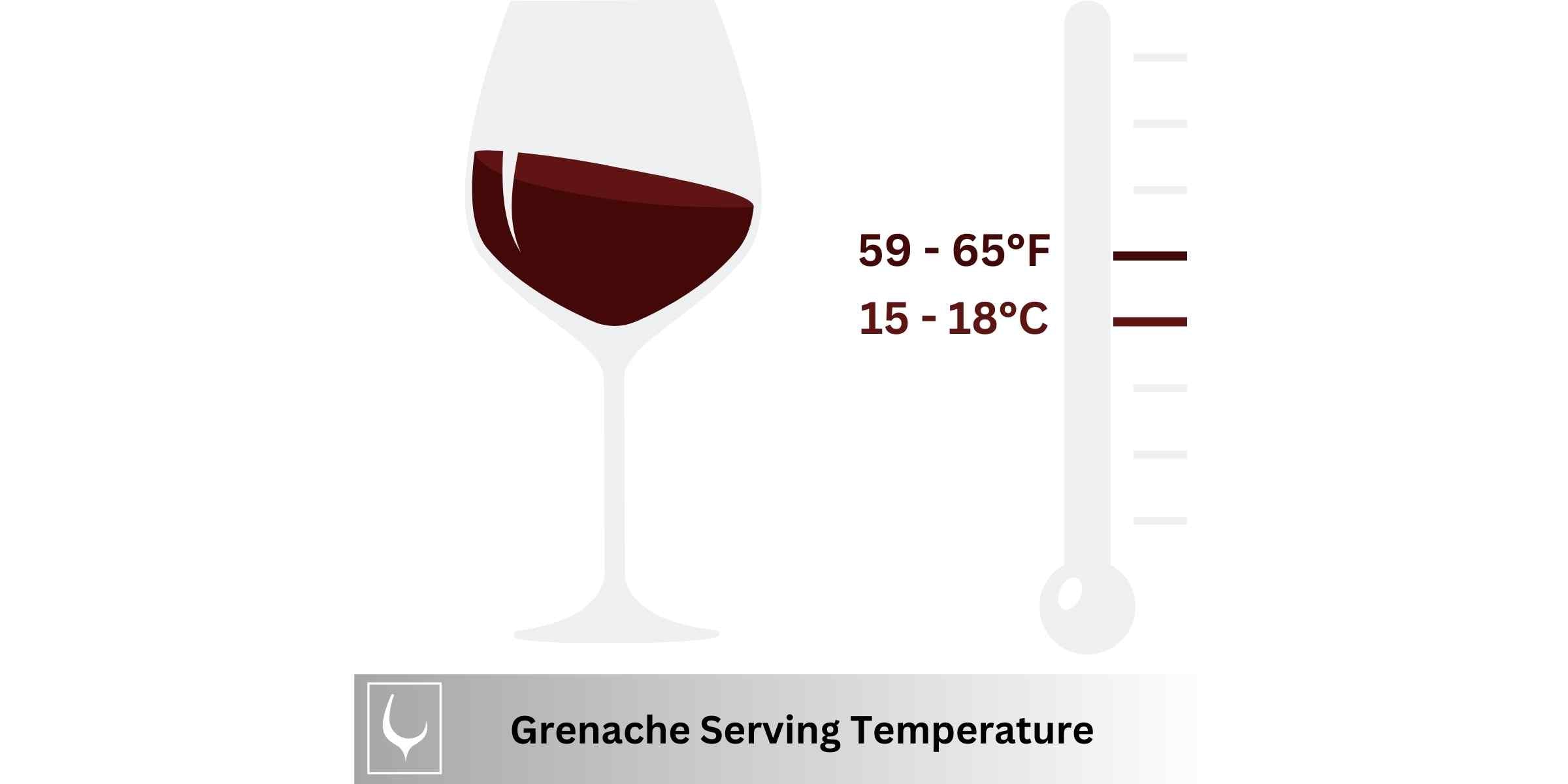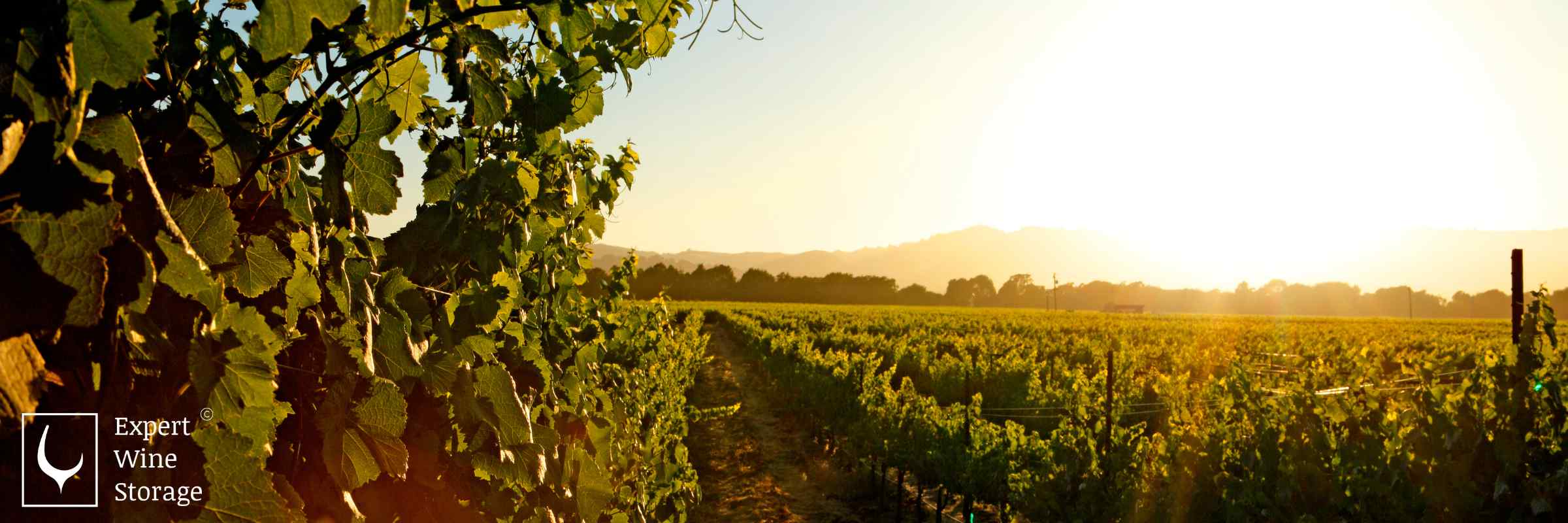Grenache or Garnacha is one of the world’s most planted red wine grape varieties.
Grenache wine is often described as delicious and fruity.
One of the reasons for its popularity appears to be its full body.
As this grape ripens late, it requires hot and dry conditions like those in Spain where it’s thought the grape first originated.
The grape is also grown in places such as:
- Sardinia
- South of France
- Australia
- California's Monterey AVA and San Joaquin Valley
It also has a sweet sensation which can be linked to high levels of glycerol and alcohol.
If you’re about to try it for the first time, you can expect to experience plump, red fruits, baking spice flavours, a hint of white pepper and black cherry.
If the grape has been grown in a hotter part of the world, you can expect to taste jammier stewed fruit flavours.
The Taste of Grenache Wine

Grenache is known for its candied fruit roll-up and cinnamon taste.
As it has quite a high alcohol content, it has a medium-bodied flavour.
However, it also has a rather light colour and is semi-translucent.
Grenache can also have subtle hints of ruby-red and orange rinds.
If it’s grown in an Old World region like Côtes du Rhône and Sardinia, it can deliver herbal notes of dried oregano and tobacco.
Grenache wines are prone to oxidation.
Even younger wines can show hints of browning, which you can see at the rim when you look at your glass.
As Grenache starts to age, the wine tends to develop a tar-like flavour.
Wines that are made from this grape often lack acid, tannin and colour.
The grape is regularly blended with:
- Syrah
- Carignan
- Tempranillo
- Cinsaut
Should Grenache Wine Be Served Chilled?

It’s recommended to serve a bottle of Garnacha chilled at 15°C-18°C.
We recommend investing in a wine cooler fridge to store your prized collection.
Despite what many people believe, serving red wine at room temperature is too warm.
Grenache Wine Food Pairings
As Grenache harbours spice, it can be the perfect partner for roasted meats, various ethnic foods and vegetables.
If you serve a Grenache with lower alcohol content at a slightly chilled temperature, this can reduce the burning sensation from spicy food.
Grenache Wine Regions
1. Spanish Garnacha
The Calatayud is a warn wine region located in the Northern part of Spain.
They grow garnacha grapes that ripen late, producing higher sugar levels than normal, which ends up producing a high alcohol level (above 15% usually) adding a spice and body to the wine flavour.
Garnacha from this area tends to have the slight aroma of ruby-red grapefruit with lots of cherry and liquorice flavour.
2. French Grenache

The Southern Rhône is where many Grenache wines are manufactured.
Wine in this region can vary a lot each year, depending on the individual vintage differences.
You can expect to taste hints of cherry fruit alongside smoky herbal notes.
This can include oregano, lavender, and tobacco.
The Rhône is a slightly cooler region.
This means its wines often have slightly less alcohol.
3. North American Grenache

Grenache made in the US tends to be very fruity and aromatic.
You can also expect crisp acidity.
American offerings tend to have the aroma of flowers and liquorice.
Grenache from North America is regularly blended with a dash of Syrah to smoothen out the flavour and add tannin.
4. Chinese Grenache
It’s thought that there are almost 12,000 acres of Grenache vineyards in China.
The country is home to 7 growing regions and more than 40 indigenous grape varieties.
Grenache History

Many experts think that grenache originated in the Aragon region of the North of Spain.
This is based on ampelographic evidence.
It’s thought that plantings spread from Catalonia and other lands under the Crown of Aragon like Sardinia and Roussillon in southern France.
From early on, the vine was regularly called Tinto Aragonés (red of Aragon).
In Sardinia, the grape is known as Cannonau.
Grenache had grown in popularity substantially on both sides of the Pyrenees prior to France annexing the Roussillon region.
Following this, the vine travelled through the Languedoc and to the Southern Rhone region where it was very well established by the 19th century.
Although Garnacha was popular in Catalonia and Navarre, it wasn’t regularly planted in Rioja until the start of the 20th century.
This was when vineyards were replanted after the phylloxera epidemic.
Grenache Wine Vs Other Wines

Lets compare Grenache to other red wine varieties:
Grenache vs Shiraz
These grapes have different flavour profiles.
Syrah has a darker palette than grenache, which is more acidic and fruity.
Syrah has plummier fruit flavours.
Grenache vs Zinfandel
These wines share various similarities, including their red fruit and spice flavour profiles.
Each of the wines has a rather high alcohol content and is quite sweet.
Grenache vs Merlot
Grenache is a lighter-bodied red wine than merlot, which is bolder and nearly full-bodied.
Merlot tends to be grown in cooler climates than grenache.
Is Grenache Wine Dry or Sweet?
Grenache is a dry wine that has sweet or sweet-ish sugar levels.
How Strong is Grenache Wine?
Grenache has a high alcohol content, which tends to be between 13.5-16% ABV.
Before You Go...

We hope you enjoyed our article on Grenache wine.
If you have any questions, leave them in the comments, or email us at info@expertwinestorage.co.uk
You can browse more posts on Wine Types here.
Expert Wine Storage can help you find a luxury wine fridge to store your precious wine collection.



 Author:
Author:
Leave a comment (all fields required)